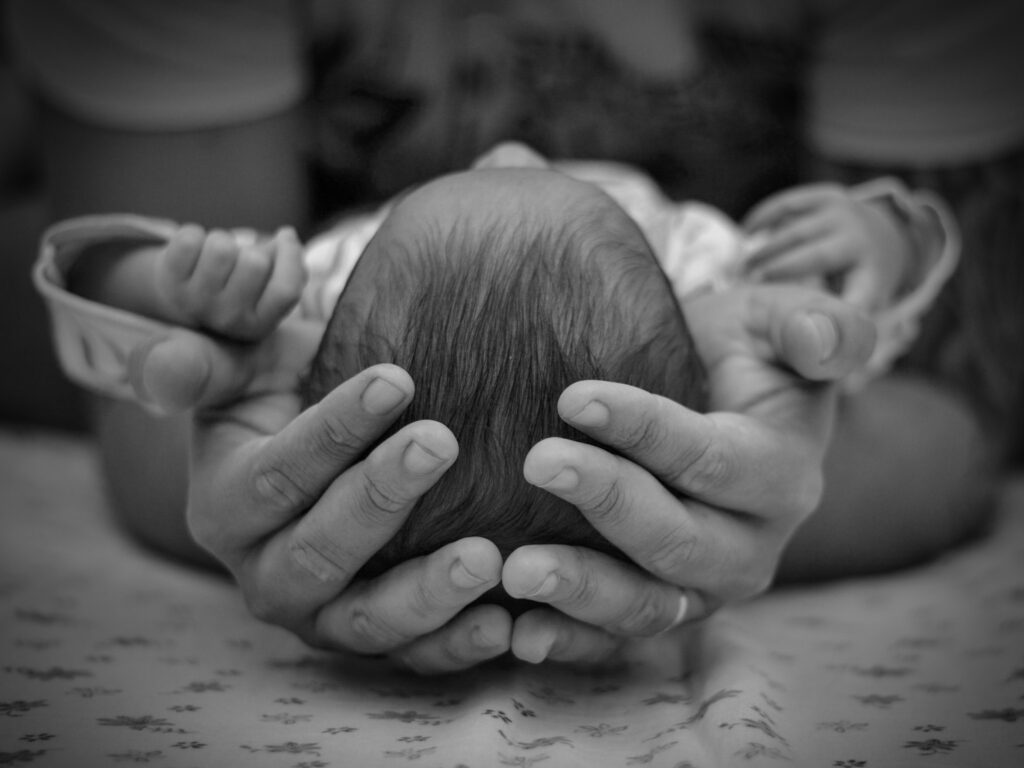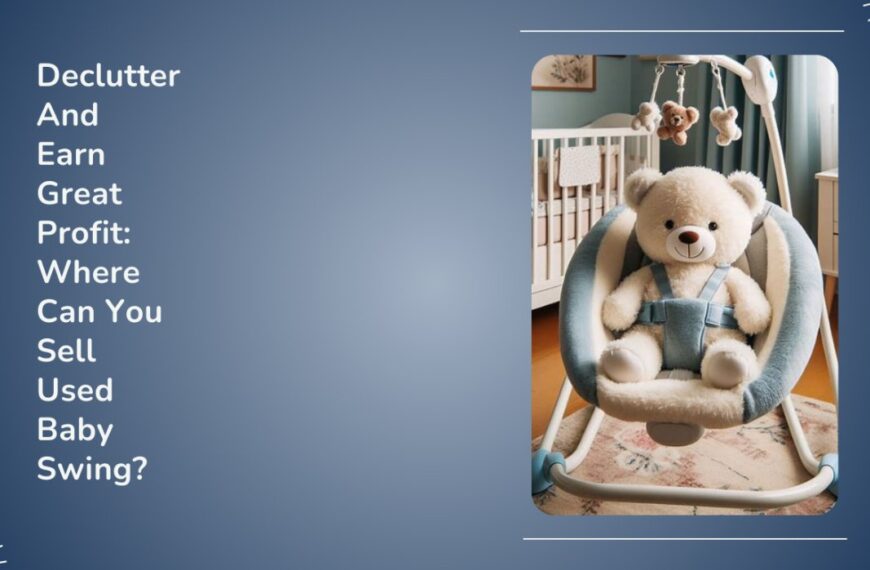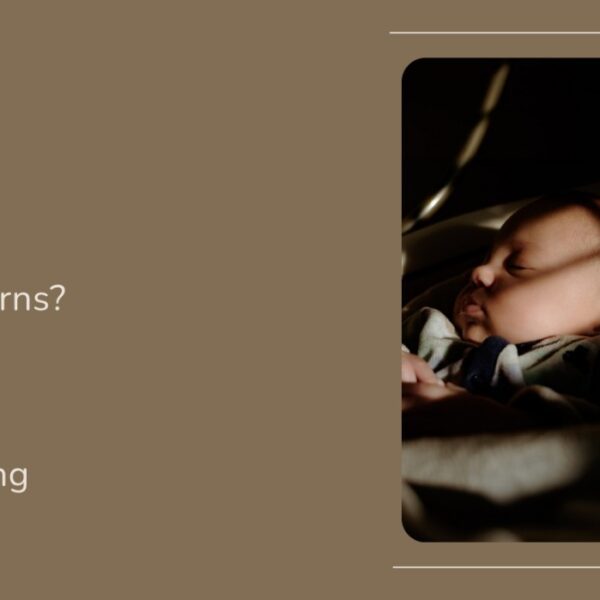Do you wondering why Flat Head Syndrome (Positional Plagiocephaly) happens and do baby swings cause flat head syndrome?
According to Research, Flat Head Syndrome has been found in 47% of infants. In Flat Head Syndrome, the baby’s head flattens either on one side or on the back due to the pressure on the head.
This pressure comes when a baby remains in the same position for a long time in any movement-restricted container like a stroller, car seat, crib or baby swing, etc.
Don’t panic! We have good news for you. It is easily curable.
In this blog post, we’ll uncover “Do Baby Swings cause Flat Head”. What are the main reasons for flat heads in babies, and what are its Preventions and Treatments?
People Also Read: DO BABY SWINGS HELP WITH COLIC?
Table of Contents
Do Baby Swings cause Flat Head?
Baby swing is not the main reason for flat heads in babies.
The root cause is the position in which the baby stays for a long time in baby swing, car seat, bouncers, or while he is sleeping in the crib.
Babies have soft skulls because their bones are not fully developed at birth. It continues to grow for a few years after birth. This growth is very necessary for their Brain Development.
But this soft skull can lead the baby to Flat Head Syndrome if the baby lies in the same position for extended periods of time.
The American Academy of Pediatrics has provided some guidelines for the safe use of these devices I have mentioned above.
I am sharing only two of them because they are relevant to this problem.
And if you follow them, it’ll be enough to help you reduce the chances of Flat Head Syndrome in your baby.
- Don’t use these gadgets for more than 1 hour a day.
- Break down 1-hour usage into two segments of 30 minutes.
Other than these guidelines, use a baby swing with a headrest. It supports the baby’s head and can help prevent flat head syndrome by distributing the pressure equally across the head.
Read the manufacturer’s instruction manual before using the headrest and ensure it is properly positioned to fit the baby’s head.
Make sure your baby doesn’t spend lengthy durations in baby swings. We know it may be the only place where your infant remains happy without you.
But the excessive use of anything is bad.
So, avoid using baby swings and other soothing devices for long durations.
People Also Read: Best Baby Swings for Travel
Other Causes of Flat Head Syndrome
Some most common reasons for Flat Head Syndrome in babies after birth are:
- Baby lying on his back in the same position for a long duration in his crib.
- Baby spending more time than recommended on movement-restricted devices.
Some babies are born with a flat head or deformed skull, this is called Molding. Some reasons for molding can be:
- Baby’s head can be flattened due to pressure in the womb. This is more common in twin birth.
- The pressure exerted on the skull during the birth canal passage.
- Assisted Delivery Instruments like Vacuum, Forceps can also mold an infant’s skull.
- If the baby has Muscular Torticollis, it’s a condition in which a baby’s neck muscles become stiff.
How Serious Issue Flat Head Syndrome is?
Flat Head Syndrome (Positional Plagiocephaly) generally DOES NOT consider a severe medical issue.
It is easily curable with some repositioning techniques.
Most cases of flat head syndrome occur between 6 weeks to 8 weeks.
It automatically improves as the baby grows and spends more time standing, sitting, or crawling. It almost always entirely goes away by the age of 2 years old.
It doesn’t affect the baby’s brain development or cause any other structural abnormalities in the brain.
But if it is very severe, it can cause some functional problems like difficulty breastfeeding or hearing. These problems can be corrected by treatment.
It is recommended to stay in touch with your pediatrician if you find flat head syndrome in your baby. And follow their advice strictly to prevent making it this much severe.
How to Reduce the Risk of Flat Head Syndrome
Flat Head Syndrome become more common in babies after the “Back to Sleep” campaign.
The campaign started in 1994, and its main goal was to lower the risk of Sudden Infant Death Syndrome (SIDS).
The campaign emphasizes that infants should sleep on their backs.
Although the “Back to Sleep” campaign has reduced the risk of SIDS, the side effect of this campaign is the increased number of Flat Head Syndrome cases in babies. There are some techniques to break this side effect of the “Back to Sleep” campaign.
Let’s take a look at how we can reduce the risk of Flat Head Syndrome in babies:
- Tummy time is a very effective technique for preventing flat head syndrome.
In tummy time, you place a blanket on a flat surface and put your baby on his stomach for some time under your supervision. It also strengthens the baby’s neck and back muscles. - Turn the baby’s head side to side when the baby sleeps.
A baby usually turns his head towards you to keep his eyes on you. If you sleep with your baby in the same bed, you can alternate the side you sleep which will encourage your baby to sleep on the alternate side as well. - When you are free, carry him in an upright position instead of putting him in the crib, baby swing, or any other movement-restricted device.
- Vary the position in which you feed your baby. For example, if you usually hold your baby in your left arm while bottle-feeding them, try to keep him in your right arm instead.
In some cases, the pediatrician may suggest “Helmet Therapy.” In this therapy, the baby has to wear a medical helmet for a few months to reshape the baby’s skull into normal form.
Final Words
The takeaway from all of this is Flat Head Syndrome is not caused by baby swing if you use it in the recommended way for short durations in a day.
Flat Head Syndrome occurs by spending plenty of time in the same position in any movement-restricted container like a crib, car seat, or baby swing.
But there is nothing to worry about it because it doesn’t cause any developmental delay in babies. It typically mends by itself after a few months.
However, Stay in touch with the pediatrician and follow his advice to get rid of it quickly.
People Also Read: Best Swing Bouncer Combo
Related Blog Posts





